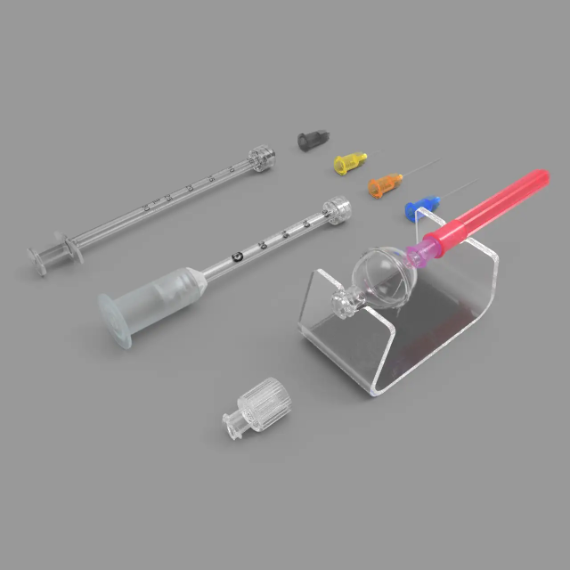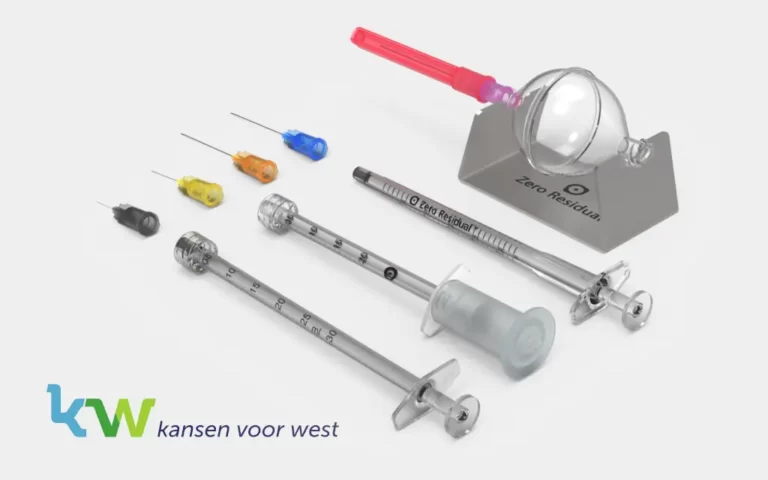Purpose
To compare accuracy, precision, and residual volume of commonly used syringes for intravitreal injections (IVIs) and to assess the intraocular pressure (IOP) rise by variations in volumes delivered.
Design
Experimental laboratory study.
Subjects
No subjects were involved in this study.
Methods
We tested 8 syringe models with 2 different needle setups, with 2 different solutions (distilled water or glycerin) and target volumes (50 and 70 μL). To obtain the delivered and residual volumes, we weighed the syringe-needle setups with scale before liquid withdrawal, with liquid, and after liquid release. We also created an experimental eye model to determine the transient rise in IOP following stepwise 10-μL increases in injection volumes.
Main Outcome Measures
Delivered and residual volumes, IOP rise.
Results
We tested a total of 600 syringe-needle setups. Becton Dickinson (BD) Ultra-Fine (0.34 ± 0.28 μL), Zero Residual (1.53 ± 1.15 μL), and Zero Residual Silicone Oil-free (1.40 ± 1.16 μL) syringes showed the lowest residual volume (P < 0.001) in comparison with the others (range: 24.86 ± 1.78 μL for Injekt-F to 51.97 ± 3.37 μL for Omnifix-F). The most accurate setups were (percentage deviation from target volume): Zero Residual Silicone Oil-free (+ 0.70%), Zero Residual 0.3 ml (+ 4.49%), BD Ultra-Fine (+ 7.83%), Injekt-F (9.42%), Norm-Ject (+ 15.88%), Omnifix-F (+ 16.96%), BD Plastipak Brazil (+17.96%), and BD Plastipak Spain syringes (+ 19.41%). There was a statistically significant difference between the Zero Residual Silicone Oil-free syringe and all other syringes (P < 0.0001), except for the Zero Residual 0.3-ml syringe (P = 0.029). The coefficient of variation was low for all syringes. The modeled IOP rise ranged from 32.3 (standard deviation [SD], 1.4) mmHg for 20-μL injection volume to 76.5 (SD, 1.0) mmHg for 80-μL injection volume. For the standard 50-μL injection volume, the peak pressure was 50.7 (SD, 0.1) mmHg, and the pressure rise duration was 28 (SD, 2) minutes.
Conclusions
There were significant differences in accuracy and residual volume between syringes, whereas they showed a high precision. Volume excess results in a considerable increase in IOP rise after injection. These findings may provide a relevant overview to clinicians and to both device and drug manufacturers regarding pharmacoeconomic, safety, and efficacy issues.
Financial Disclosure(s)
Proprietary or commercial disclosure may be found after the references.
Keywords
Accuracy, Anti-VEGF, Intraocular pressure, Intravitreal injection, Residual volume, Syringe
Abbreviations and Acronyms
BD: Becton Dickinson
IOP: intraocular pressure
IVI: intravitreal injection
SD: standard deviation
Full Article: https://www.sciencedirect.com/science/article/pii/S2468653023002543








